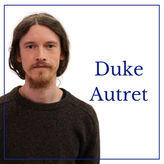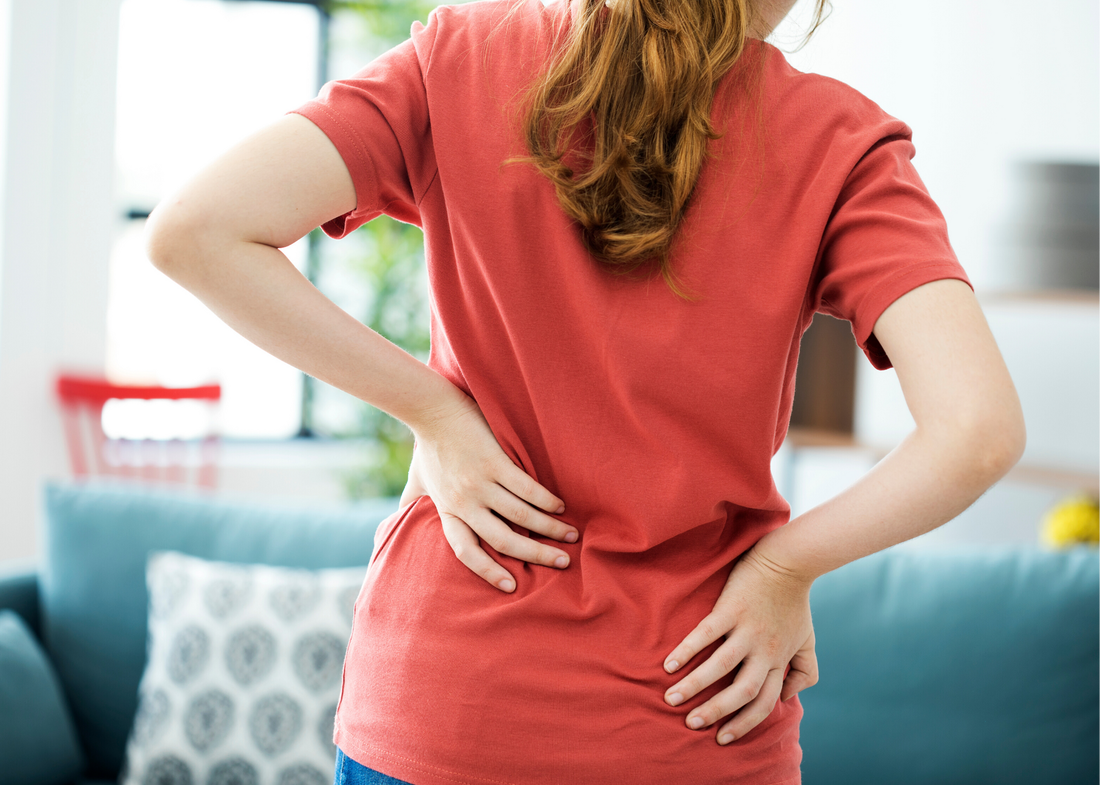|
Yep! We're open on Saturday April 3rd and Sunday April 4th, so if you find yourself in need of a remedial massage or myotherapy appointment we are here to help!
We will be closed on Good Friday (April 2nd) and Easter Monday (April 5th) for the weekday public holidays, but you can still catch us over the weekend. Appointments are going fast, check our availability and book in soon! We hope you have a happy and safe Easter! We get asked quite a lot if a scan like an X-ray, ultrasound or MRI is needed first before a Myotherapy or Remedial Massage appointment. Generally, the answer is no, you won't need to go for a scan first. Myotherapy and Remedial Massage are very low risk treatments that can help with your pain without needing imaging first. What can scans show you?
X-rays will show you bony changes. This can include obvious bone injuries like breaks and fractures, as well as things like arthritis and bone spurs. Ultrasound can pick up changes in soft tissues like muscles, tendons and bursa. There are limits on how much detail an ultrasound can pick up especially if the tissue is deep inside the body, and it can sometimes be unpleasant because the scanning device needs to be pressed against the affected area to complete the image. MRIs provide a more in depth look at injured tissue. They can be used to observe bone, muscle and nerve changes, as well as identifying other non-musculoskeletal conditions like cancer or abnormal growths. CT scans are a series of images of the affected area to create a cross section view of bone and soft tissue. When might you need a scan before an appointment? There are certainly times that it can be useful to get your GP to refer you for a scan, like:
Do you already have a scan or imaging report? Great! Bring along the copy of your report to your appointment. Our practitioners can have a read of the findings and make sure that you understand what it means, and this can help inform our treatment approach to your pain. Lets get started! Book your appointment with us and we'll complete an assessment and treatment. If we think you may need some imaging we can write a referral to your GP explaining our assessment and asking them to complete further investigations so that as your health team we get you back to feeling and moving better! Thats right! We have a new face in the clinic! Meet Duke Autret, our new Remedial Massage Therapist! Duke got his Remedial Massage qualifications in 2019 from Australian College of Fitness & Bodywork, which is the same college that Mel studied her Myotherapy qualifications.
He is also close to completing his certification as a Pilates instructor, and interested in leveling up to become a Myotherapist! He's a body and movement nerd - and you know how much we love nerds here at Simple Wellness Myotherapy! In addition to a feel good remedial massage, he will be able to give you some great take home movements that help which you can use between your treatments to boost your recovery! Our long term plan is that once Duke has finished his Pilates instructor training, we want to offer combination treatments where you can experience half the appointment as manual therapy, and the other half as a tailored pilates program. You can book with Duke for remedial massage on Thursdays 3pm-7pm and Sundays 12pm-6pm. Most private health insurers cover Myotherapy as part of the Extras packages. The category that Myotherapy falls under tends to vary between providers, sometimes we are in the same category as Physiotherapy, sometimes under Natural Therapies, sometimes under Remedial Massage.
We often get asked "How much will my private health pay?" but this can be impossible for us as practitioners to guess. The rebate amount varies depending on which health fund you are with and which level of cover you have. There are hundreds of options for Extras insurance. To find out your exact rebate amount, we always suggest contacting your health insurers Members Service team to ask them to check what you're entitled to on the specific level of coverage on your health insurance plan. Some health insurers will give you a set rebate amount that doesn't go up or down if you book a longer or shorter appointment. Some will give a higher rebate on your first ever appointment with a new practitioner, and then a lower amount on all your follow up appointments. And some will give a percentage based rebate, so the amount changes depending on how much the appointment fee is. All health insurers will give you a cap limit per year on the maximum amount of rebates they will give before you use up your limit. This amount varies a lot between funds, so be sure to check with your insurer what your maximum limit includes. Most funds reset the limit at the start of the year on January 1st - however! A small number of funds restart from the financial year on July 1st (including AHM, Defence Health, and PeopleCare just to name a few) and a smaller number reset your limit from the anniversary of the date that you joined them (GU Health, looking at you!) We have had some very kind, concerned patients who have not wanted to use their private health insurance in the past because they believed that it meant we had to give them a discount of the rebate amount. In case you've wondered how this works, let me explain: Using the HICAPS machine in our Knoxfield Myotherapy clinic, we swipe your private health card. The machine connects to your insurer and allows them to pay the rebate amount directly to us, so that all you need to pay is the difference between the total appointment fee and what the rebate covers - this is your "gap" payment. What happens if you don't have your card, if the card has expired, or if the HICAPS machine can't connect for some reason? In these situations, we rely on the good old fashioned method of giving you a receipt to make a manual rebate claim. You pay the full appointment fee, and then your private health insurer pays the rebate amount directly to you. We prefer to use the HICAPS machine whenever we can so that we don't leave you with paperwork to do to get your rebate, but doing a manual claim like this is still a perfectly normal and valid way of using your extras cover! Need an appointment? Book in with one of our friendly practitioners now! We're finally back after a long lockdown period, and we're seeing a lot of people with very similar pain issues in their neck, shoulders and backs. Working from home definitely seems to be taking its toll on peoples bodies, so while we're very happy to help you out by releasing those sore, tight muscles, we also wanted to give a few of our top tips on how you can shake up your daily patterns to reduce your pain. Take Regular Breaks
We can't emphasise this one enough!! The most common thing we're hearing these last few weeks since returning to the clinic is that people are working longer hours. Even if you have the most perfect posture, staying in one position for too long can leave you feeling stiff, sore and fatigued. Think about it this way - if we asked you to hold your coffee cup out in front of you at shoulder height, you could probably do that. If we asked you to hold it there for 6 hours without taking a break, your coffee cup would feel like it weighed a ton, your arm would probably start to shake or cramp, and you would end up trying to lock your elbow joint into position to stabilise your arm. Your muscles would be tired and sore. You might even have trouble allowing your arm to lower because you had been stuck in that position for so long, or find that trying to raise your arm again afterwards felt like you'd been to the gym for 10 hours. Try to take a quick movement break at least once per hour. This could be as little as just standing up, stretching your arms above your head, rolling your shoulders or doing a little spinal twist. You could use this chance to drink some water, go to the toilet, make a cup of tea, or stand in the sun. Trust us, your body will thank you for the movement and the chance to reposition. Set Up Your Workstation You're probably not the only one working from your home right now. We know a lot of people have to share their work from home space with partners and kids, and theres only so much space to go around. As best you can, try to set up your workspace so that your equipment is at the right height. This means screens at eye level, mouse and keyboard positioned so your arms can be at 90 degrees, and your chair is at the height that allows you to have your feet resting comfortably. We know this isn't possible for everyone. Some patients we've seen this last week or so have been telling us they have to work from a low coffee table, or at a high kitchen bench, or even working from bed. If this is your situation, please keep in mind that regular breaks are going to be even more important for you! Stretch and Move! There are plenty of easily available online stretching and movement classes that you can use to help guide you through some feel-good motions. Our favourite is Erica Webb's online yoga and pilates studio, which offers a great variety of classes including what Erica calls "movement snacks" which are short 5-10 minute videos that you can do anywhere, any time! Memberships to Erica's studio are less than $10 a week, and include a selection of on-demand classes and live yoga classes. Set Strong Work/Home Boundaries The blurring of the line between work and home has been strong this last year! We're hearing from people that they are often logging in early or continuing to work late to try to get ahead of deadlines or hectic work weeks - and often these extra hours are not even paid hours of overtime! A once in a while overtime session may be occasionally needed, but we encourage you to try to avoid the temptation of working longer hours on a regular basis. Use Your Self Care Tools Massage balls, foam rollers, magnesium creams, heat packs - all of these tools that we talk about in the clinic are really great ways that you can help reduce tightness and tension in your body between treatments with us. If you're not entirely sure how to use them, ask us at your next appointment and we can show you the best way to get into your problem areas using tools you already have, and give you recommendations of new self care tools that are a great investment for your health! (We don't sell any of these products, but we can direct you to reputable stores or websites that you can purchase from) Book a Treatment! Now that you can access manual therapies again, book in with us! We'll help you make some quick improvements to tight aching muscles, and help you plan for reducing pain while you continue to work from home or once you get back to your office! After the nearly 3 month COVID lockdown, we're very happy to say that Myotherapy and Remedial Massage are back from Wednesday 28th October! We've moved a few things around in the clinic, and we can't wait to welcome you back and resume your treatment plan. We've given the first choice of appointments to those of you we know have been waiting patiently for this day, but we'll have our full online booking system up and running again very soon.
Thanks for your support throughout this year! In short: Yes, we will be closing our doors again for a short 6 week period.
The new restrictions coming into place today have big consequences for almost all Melbourne residents, but lets talk the specifics of what this means in relation to your Myotherapy or Remedial Massage treatment plan. We've been advised that Myotherapy and Remedial Massage can't continue. Yes, we do screen every person we see, we clean thoroughly between every single appointment, and therapists and patients are both wearing masks. We've done everything we can to mitigate risks, and follow the ever-changing rules so we can keep you safe. But the DHHS have asked us to help by taking a temporary break. There are significant fines for businesses and individuals who don't adhere to the new restrictions. The fines for a business staying open when they are not permitted is up to $10,000, and the fine for an individual is $1652. Thats a very expensive Myotherapy treatment! Myotherapists and Remedial Massage Therapists are not alone in this restriction though. In fact, it will effect all Allied Health practitioners in some ways. Over the last few days the advice has changed, depending who you ask, but in general it appears that urgent care can still be accessed from Allied Health providers like Physiotherapists, Osteopaths and Chiropractors. The initial advice was that all patients would need a referral in the form of an Enhanced Primary Care (EPC) or Chronic Disease Management Plan, but I have now seen the Chiropractic Association indicating that referrals may not be needed. If you're in doubt over whether you can be seen by someone for urgent care, your GP is always a safe bet. They will be able to clarify which Allied Health practitioners you are able to see, and may also be able to give you additional guidance or prescribe you medication if its needed. Dr Wajib Dib at Together Medical Family Practice is a fantastic bulk billing GP, and is still taking new patients for phone consultations. What does "urgent care" mean? Urgent care may include things like:
Who should you see for urgent care? We know and trust these local Allied Health practitioners:
I'm very sad to be closing my doors again, for the third time this year. One of the hardest parts for you, my local Knox and outer Eastern burbs patients, is that our local government area is actually one of the lowest in all of Melbourne for total and active cases. While other areas have huge rising numbers of cases, our area stays fairly low risk. I'm sorry I can't be here for you for face to face support for these next 6 weeks, but my phone and email are always here to offer advice, send you links to exercises and self care, or to answer questions. As we've all seen over these last few weeks, there are a small number of people doing the wrong things, and unfortunately its come to that time where its now impacting everyone with a blanket restriction across the whole Melbourne Metro area. Thank you for doing the right thing so we all get through this quicker. Thanks for getting tested if you show symptoms. Thanks for staying home til you get those test results. Can't wait to see you again soon! We took the last 10 days to take a slow and cautious approach to completing our risk assessment with the rolled back Stage 3 Restrictions here in Victoria.
I've just listened to Dan Andrews' update for Sunday 19/07/20, and after reviewing all the data of the last 10 days since the Stage 3 Restrictions were re-announced, I have some updates on our risk assessment. And its good news! Our local council area, Knox Council, has stayed a relatively low risk zone. Knox has remained one of the least effected regions of Metro Melbourne throughout the pandemic. As of 19/07/20, there are only 9 active cases of COVID19 in the Knox region, and the data shows good statistics on very low new cases occurring in our area, and good rates of recovery. The Department of Health has advised that Myotherapy and Remedial Massage appointments are still allowed under the current Stage 3 Restrictions. This means that you are currently allowed to continue getting treatment for chronic pain conditions, injuries, or pain from your new work from home set up! We can help you with headaches, back pain, sciatica, shoulder pain, fibromyalgia pain, RSI, nerve symptoms like pins & needles and shooting pains, and these sorts of specific pains or injuries. From Monday 20th July, we will be open these hours: Monday, Tuesday & Friday 9am-7pm Wednesday & Thursday 9am-4pm Saturday 9am-6pm Dan Andrews has announced today that from midnight on Wednesday this week, it is mandatory to wear protective face masks outside of your home. This is to protect you, your family and your community. We know this may not feel comfortable during your treatment, but we will ask that you keep your mask on during your appointment. Help us to keep COVID19 out of our clinic:
What about Stage 4 Restrictions? Theres a lot of talk going around about Stage 4 Restrictions, but Dan Andrews has not announced any plans to move to this level of restriction at this time. If any further tightening of restrictions is announced, we will keep you informed with how that impacts your treatment plan. To make a booking, go to our online booking page to see our current availabilities. Our Myotherapists help a lot of people with scoliosis of varying degrees, from very mild curves to more exaggerated curves that permanently alter posture. Myotherapy is not a cure for scoliosis, but ask any of our patients and they'll agree that managing the pain and muscle fatigue is much easier with a regular treatment to help manually decrease the load and pressure on their spine. What is Scoliosis?
Scoliosis is a curvature of the spine to the right or left, creating a C or S shaped spine. It usually begins at puberty during growth spurts. Most people with scoliosis will have mild symptoms that can be managed by staying active and using therapies and tools that manage muscle tension and discomfort. What do Myotherapists do to help someone with scoliosis? As always, we start with an assessment. We'll look at your back, and how you move and check where you feel pain during your movement. You'll probably notice you have regular patterns that your scoliosis follows - like one hip or shoulder sitting higher than the other, one shoulder that rolls forward or backward more, or a particular painful spot that gets really tight or feels like it builds up pressure. Hands on massage treatment is always a favourite with our patients. Why? It feels good! And it helps to stimulate the over-tired muscles supporting the spine. This can help reduce the muscle tension and fatigue, and let those high-pressure areas feel some relief. Cupping is a technique that works particularly well for a lot of our scoliosis patients. We use cupping to help get a quick change in muscle tightness and reduce trigger point areas, while also bringing lots of new, fresh blood to the muscles to help them heal and release. The cups have a pressure valve and a pump that we use to create the gentle suction effect, which stretches the muscles and connective tissue under and around each cup, and stimulates increased bloodflow to that area. They can feel a little pinchy at first especially over tight areas, but after a few minutes that feeling usually goes away, and when the suction is broken the pressure releases and leaves the muscles feeling warm, stretched and more mobile. The relief that comes after a treatment can be extended by using taping to help support your spine, hips and shoulders. Did you know you can keep the tape on for up to a week? How often do I need to see a Myotherapist? When you first come in, we like to see you again within 1-2 weeks to see how your first treatment settles in. From there we can work out the best schedule for you to keep painful flare ups at bay. This is really different person to person, but the average is about every 2-4 weeks - for some people we spend a little longer doing weekly treatments until it starts lasting longer, and for some people we can move to a 6-8 week schedule. If you experience a pain flare up, come in for an appointment so we can settle the flare as quickly as possible and get you back to your normal maintenance routine. How do I get an appointment? Appointments can be made online or you can phone Mel on 0401212934. Does this sound familiar?
These can be signs of hip bursitis, which is an inflammatory condition that can be a very common cause of hip pain. The good news is that we help people with this all the time, and we can get you started on a treatment program to help reduce the pain and build up the strength in your hip! What is Bursitis?
Bursitis is the name of a condition where the bursa in your joints become inflamed. Bursa are the fluid-filled sacs that help cushion joints and reduce friction as the joint moves. Healthy bursa are important in pain free movement. When the bursa becomes inflamed it swells and becomes highly sensitive. The joint doesn't move easily, and the muscles surrounding it can become painful and tight trying to protect the joint. Bursitis can cause acute pain that increases with physical activity. If the inflammation remains active for a long time, the pain can progress to a chronic state. What causes hip bursitis? The most common causes of bursitis are things like overuse or strain on the hip joint. This can happen through a high level of exercise or activity, or through repetitive unbalanced activities like holding a baby on one hip, or leaning your weight to one side to avoid pain in other areas like your lower back, knee or ankle. Other causes can be less common things like infection or gout within the joint. People with autoimmune conditions like rheumatoid arthritis can be more vulnerable to developing this inflammatory condition. How can we help? Remedial massage and myotherapy can help relieve painful symptoms of hip bursitis. We can reduce muscle tension around the hip joint, and assess the other areas above and below the painful hip so that we can address any issues that are contributing to your bursa becoming irritated. Taping for stability and support can be very useful, and can help relieve pain for longer. We can give you a program of exercises to gradually strengthen your hip without increasing the irritation. Book a time with us to get the ball rolling. Should I see a doctor? If your hip pain has been ongoing for quite some time, it can be a good idea to check in with your doctor. Your GP can advise you if a course of anti inflammatory medication will be helpful for you, or you can ask your pharmacist for an over the counter recommendation for symptom relief. We're lucky to be located inside Together Medical Family Practice in Knoxfield, where you can get access to a fully Bulk Billed GP in the clinic with us and an understanding pharmacy team downstairs. |
Meet Our Team
We have a team of great practitioners available 7 days a week at our Rowville clinic. Archives
July 2024
Categories
All
|
Got a question about Myotherapy?
Contact Mel by phone, email or Facebook
|
Simple Wellness Myotherapy & Remedial Massage Clinic
Shop 12B 150 Kelletts Rd Rowville VIC 3178 |
Phone us on
03 8204 0970 |







 RSS Feed
RSS Feed